![]()
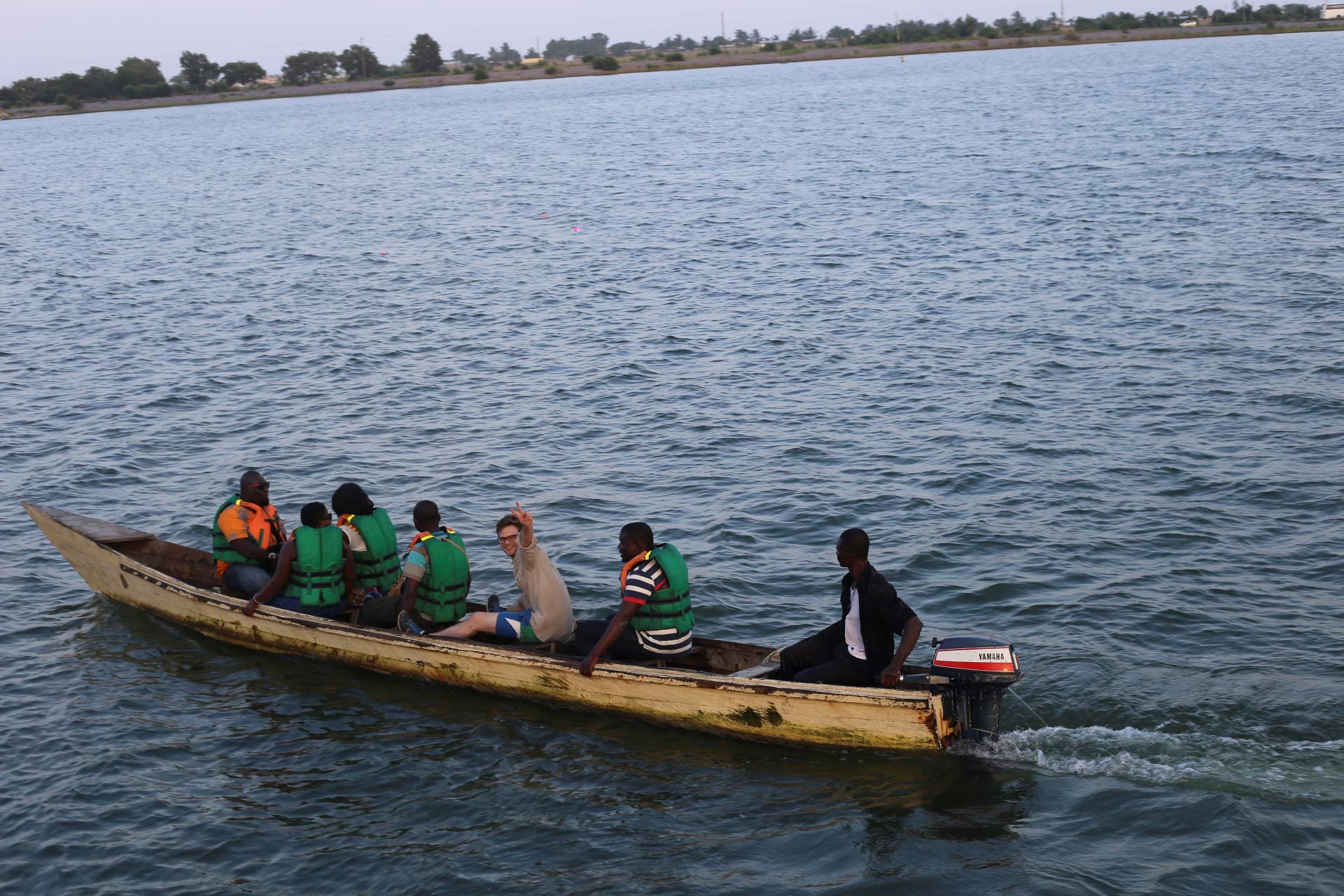
Amazing experiences at Botweburg’s “Woezor 2016”
According the Accra-based Nature Conservation Research Centre, the Volta Region has more ecotourism sites in Ghana than any other region.
Advertisement
Out of the 27 ecotourism sites the centre has identified, the Volta Region alone has seven with the next highest located in the Brong Ahafo and Eastern Regions both of which have four respectively.
The seven ecotourism sites identified by the centre are Amedzofe, Kpetoe, Liati Wote, Kyabobo National Park, Tafi-Atome, Wli and Avu Lagoon.
Amedzofe is for mountain and waterfall, Kpetoe is for Kente weaving, Liati Wote is for mountain and waterfall, Kyabobo is for wildlife Tafi-Atome is for Mona monkeys and Wli is for waterfall.
It goes without saying, therefore, that those who love to have a feel of nature for the purpose of tourism cannot bypass the Volta Region in their quest for the best sites to have their fix.
The Volta Region is the ecotourism capital of Ghana. Well, almost!
It was the reason why when they decided to embark on drive to instigate domestic tourism, the first place members of Botwerburg chose was the Volta Region and out of the seven ecotourism sites available in the region, they visited three.
The three-day journey to the Volta Region which started on July 1 and ended on July 3 took the team comprising members of Botweburg and other travel and tourism lovers through Wli, Ho, Agotime Kpetoe, Keta, Tafi-Atome and Ada.
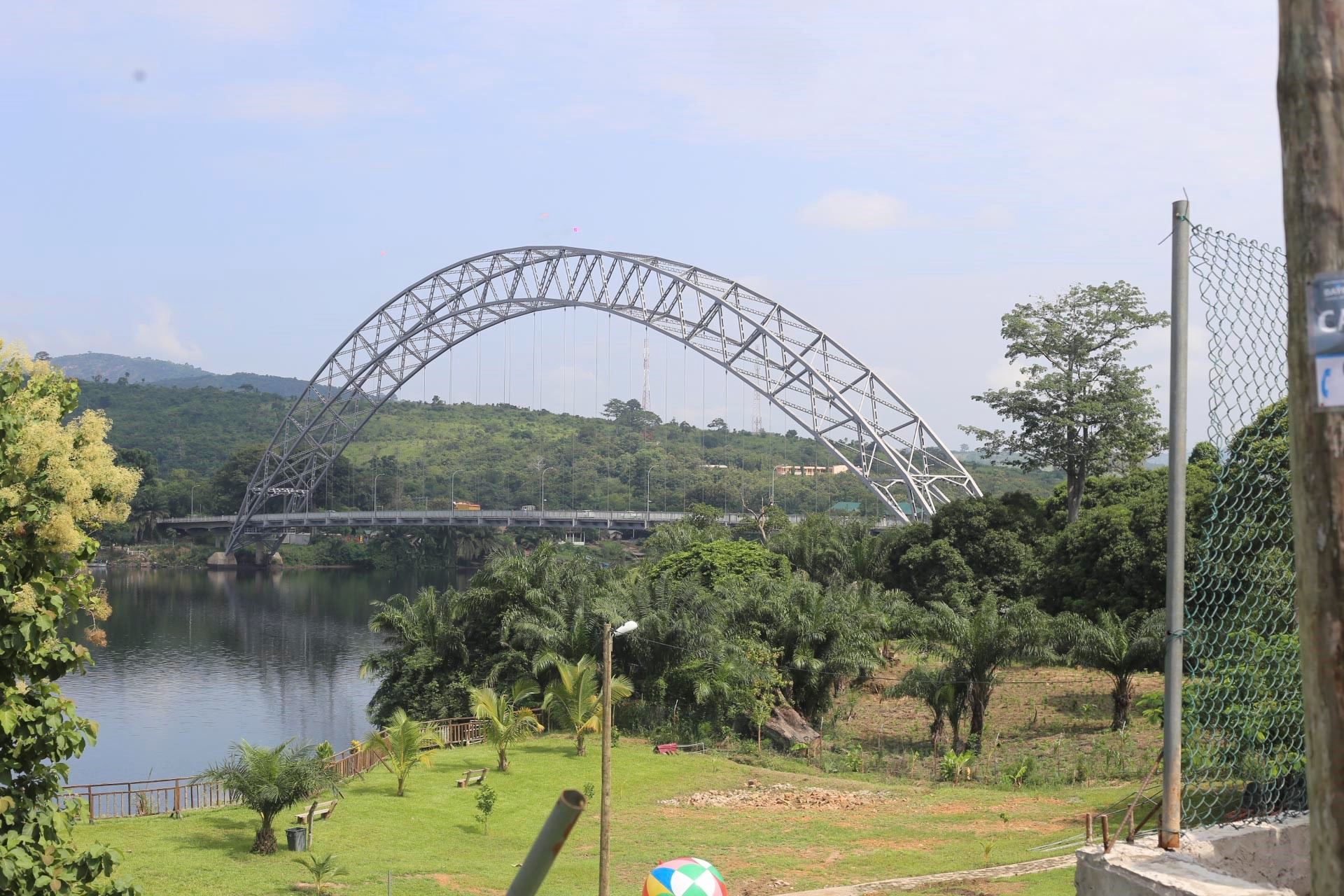
The Adomi Bridge at Atimpoku
Having left Accra in the morning, the team made a brief stopover at Atimpoku to enable members buy different foods including “aboloo”, snail kebab, prawns, shrimps, oysters, and bread.
After this members walked across the Adomi Bridge, which links the Eastern and Volta Regions, for photo opportunities and also to savour the picturesque view of the Volta Lake before from the bridge.
Some members on the team took the opportunity to take photos on the Adomi Bridge.
The adrenalin rush and the excitement that comes with seeing the grandeur that the Wli Waterfall exudes can only be experienced and not to be told.
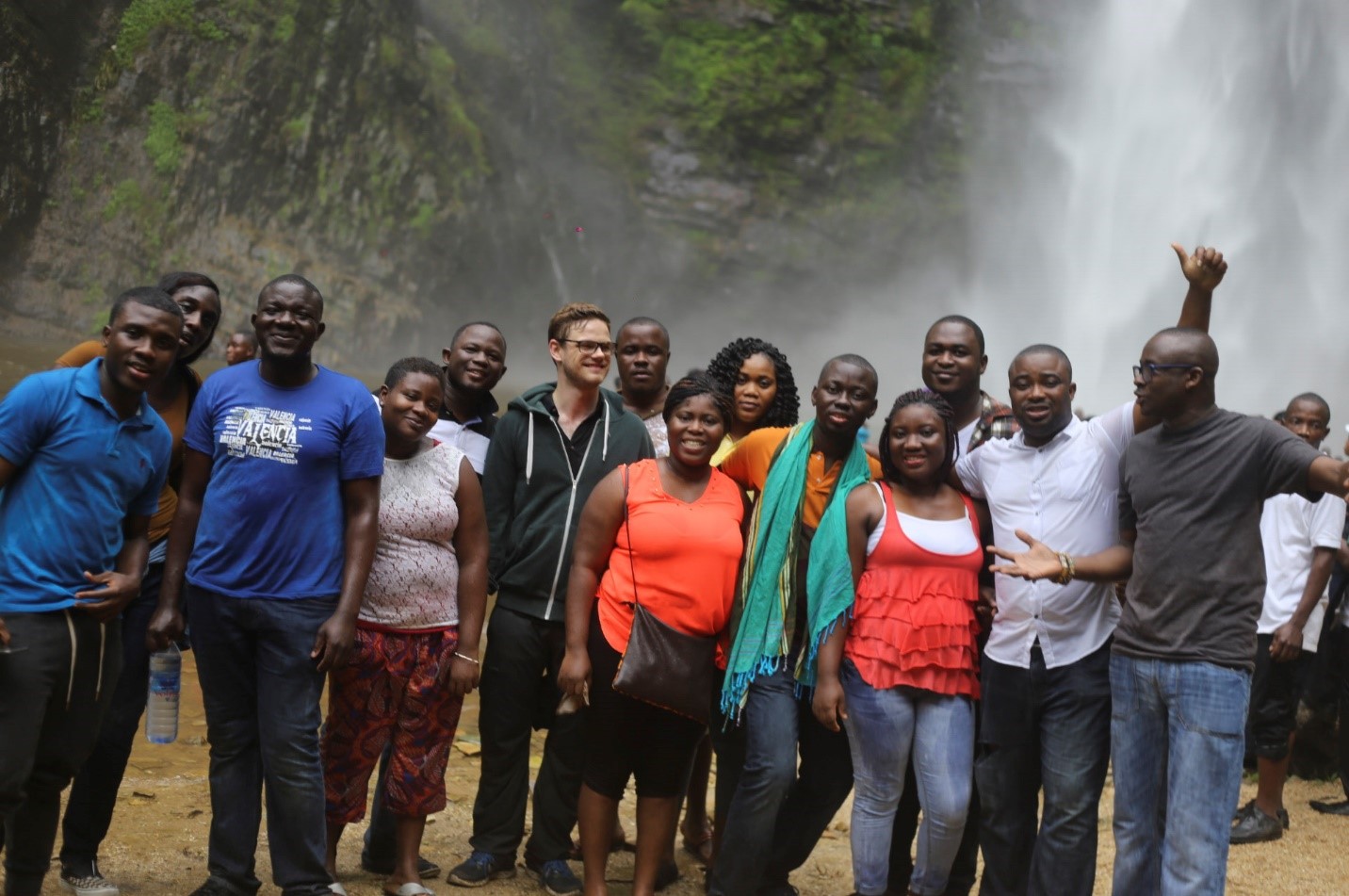 The entire team on the trip took a photo before leaving the falls to walk for another 35 minutes to the bus
The entire team on the trip took a photo before leaving the falls to walk for another 35 minutes to the bus
Wli Waterfalls
Wli is located in the Hohoe Municipality of the Volta Region and it is located about 20 kilometres from Hohoe. The waterfall at Wli is one of the wonders of nature bestowed on Ghana.
Wli is the highest fall in West Africa. It has two levels – upper and lower fall. It measures about 143 metres from the upper to the lower. The thrill of Wli is not just seeing and bathing in the waterfall, but also making the journey from the tourist reception centre to the fall site.
The Wli waterfall is nestled on the Akwapim-Togo mountain range and hidden within a thick forest. It takes a minimum of 35 minutes of brisk walking across nine bridges with eight of them being water flowing from the Agumatsa River (one of which the tour guide said flows from Togo) to reach where the water from the mountain plunges into the pool below.
On any given ‘dry’ day, tourists would encounter different species of fauna: birds, butterflies, creeping and crawling animals and mammals on the way through the forest to the fall as well as different and wonderful species of flora. However, it was our lucky day as it started raining immediately we entered the forest to start our journey to the pool.
Each member of the team was wet to the underwear before reaching the pool where some of us decided to take a bath in the pool, with the many other revelers, to complete the excursion. It was even more interesting going back to the bus while feeling cold and jumping over pools, puddles and scaling all the nine bridges for another 35 minutes.
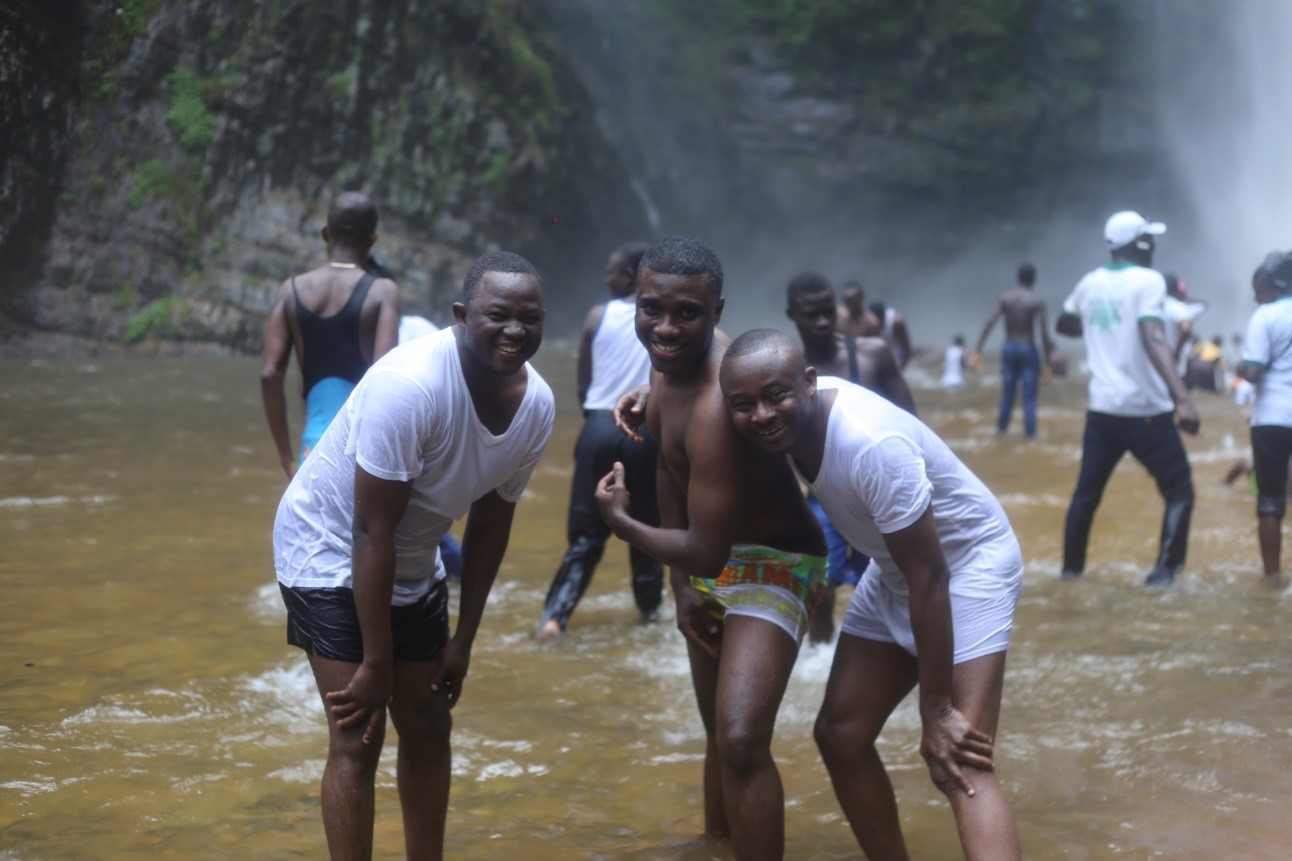 L-R: Francis, Fred (Pasino) and Kwame pose for the camera after taking a swim in the cold pool
L-R: Francis, Fred (Pasino) and Kwame pose for the camera after taking a swim in the cold pool
After the Wli adventure, the team made the two and half hour journey to Ho to have dinner at the Sky Plus Hotel where we lodged before going to Ho town to experience some nightlife at Mirage Pub and Woezor Hotel.
Agotime Kpetoe Kente Village
One of the most exciting and important legs of our expedition across the Volta Region was a stop in the famous kente weaving town of Kpetoe. The town is just a few minutes’ drives from Ho on the Ho-Aflao road and it is known for one thing: Kente.
The Agotimes reside on Ewe land but they are not Ewes, they are Dangmes who migrated till they found a place to live and exercise their trade of weaving and selling the rich cloth made from cotton wool known as kente. They claim that they are the originators of kente and that they can trace that to their migration from Sudan through to residing in the Kpone area in the Greater Accra Region before finally settling in the present location.
Our team was very privileged in that the paramount chief or Konor of the Agotime Traditional Area, Nene Nuer Keteku III had directed that a durbar of his chiefs, queen mothers and people be held in our honour. This was meant to give us a feel of what it looks like when the town and all the Agotimes from all their towns and villages in Ghana and Togo gather to celebrate their kente festival usually held in September.
It was the reason why Nene Akoto Sah VII, the Chief Warlord of the Agotime Traditional Area along with other chiefs, queen mothers, courtiers and other important people in the traditional area sat in state to welcome our team and to cause for us to be treated to music, dance and the culture of the people of Agotime.
Every citizen of Agotime we saw at the durbar wore a kente or had a piece of kente fabric in whatever costume they wore. From the dancers to drummers to the drums they were playing, everything in Agotime Kpetoe depicted the rich fabric they are known for.
The Member of Parliament aspirant for the area, Mr. Elvis Wisdom Attivoe welcomed the team on behalf of the Konor, the traditional council and the people of Agotime. He also spent about 30 minutes to narrate the history of the people of Agotime and their Kente to the team.
He stressed the fact that the history of the Agotime people is replete with evidence about how they originated the weaving of kente and that the craftiest and well weaved kente patterns come from Agotime. He also said the best kente weavers come from Agotime.
On his part, the Warlord Nene Akoto was thankful to the team for taking the time to visit the Volta Region in general and Kpetoe in particular to promote tourism. He said the Konor and all the chiefs and people were happy to receive the team and urged us to be evangelist of the rich kente of the people of Agotime when we go back. He took the opportunity to invite the team to the Agotime Kente Festival to be held in September.
The visiting team presented two bottles of Schnapps to Nene Akoto and also donated some cash as a token of appreciation for the honour done it by the chiefs and people of Agotime. Ms. Precious Tenge, a former Miss Kente runner-up received the gifts on behalf of the chiefs and people.
Members of the team took time to visit the Kpetoe Kente Exhibition Centre as well as the Kente Museum in the town to familiarize themselves with the history of kente and also to purchase a few kente items to end the visit to Agotime Kpetoe. 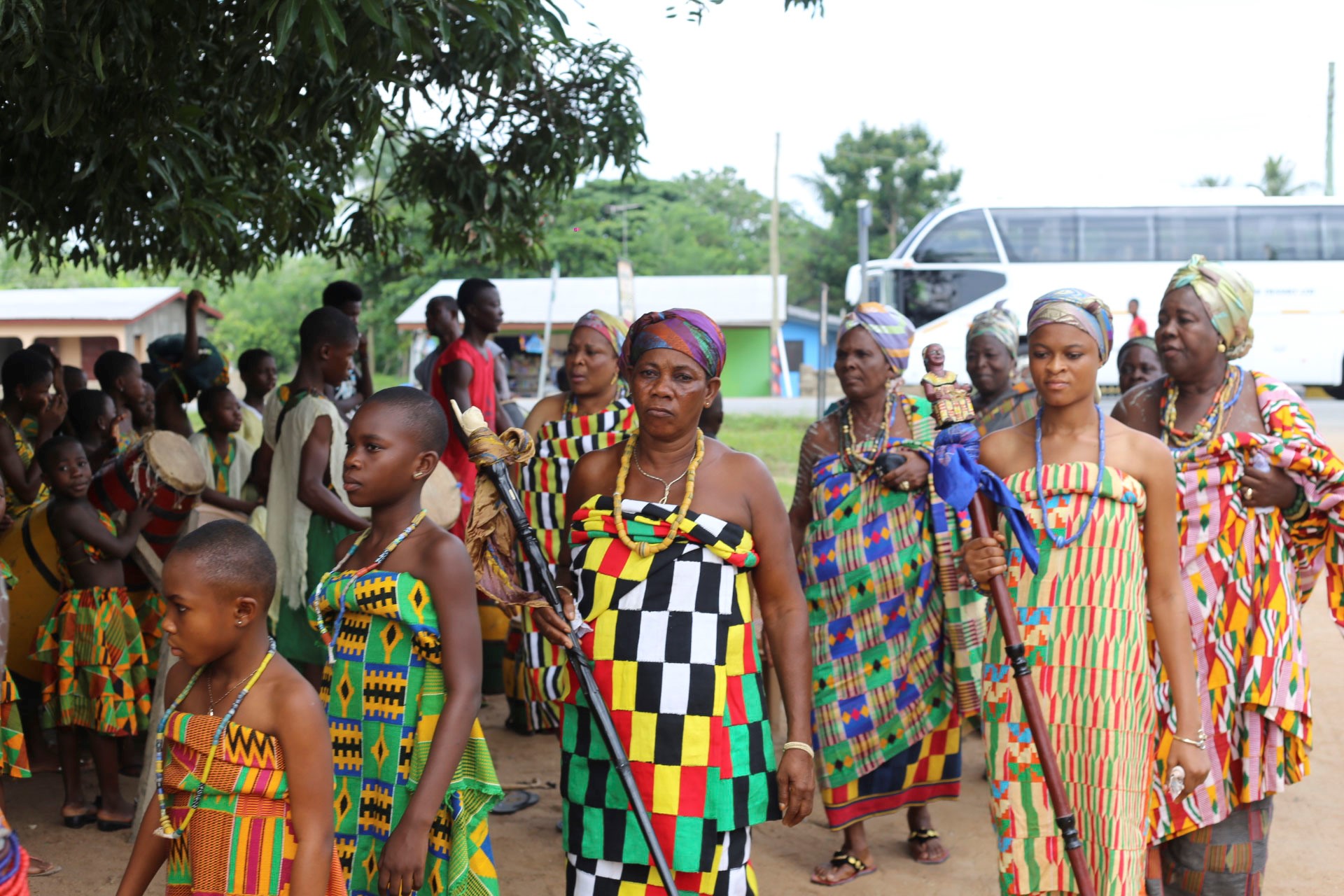 Queen mothers and courtiers in their resplendent kente arriving at the durbar grounds at the Agotime Kpetoe Kente Village
Queen mothers and courtiers in their resplendent kente arriving at the durbar grounds at the Agotime Kpetoe Kente Village
The road trip from Kpetoe towards Xiope to the Ave area through Dzodze and Akatsi via Nogokpo and Agbozume to Keta was amazingly exciting. It gave members of the team an opportunity to see many parts of the Volta Region that some only hear about. For instance, maost people woke up when it was mentioned we were in Nogokpo.
Upon seeing the salt mines and vast and unoccupied land showing drying up lagoon, we knew we were close to Keta. Our first stop was at the Keta Lagoon Resort, which as the name suggests, is a resort that had been built on the lagoon with wood and stilts.
Our interest for stopping was to have a feel of rowing in the canoe on the lagoon. Having gone through the needed processes, the team was divided in three to enable each to be transferred by the outboard motor powered canoe to the far end of the lagoon.
The destination was a lighthouse-like structure made out of wood and supported with trees. It is located across from where the lodging and bar area of the resort is. The thrill of being on that structure was the sensation felt that although it was held by thick woods, it was a floating on the water.
Having left the lagoon resort, the team boarded the brand new Metro Mass Transit coach and drove to the nearby Fort Prinzenstein. A significant part of this fort which was built by the Danes in 1784 for trading purposes has been eaten away by the sea.
The fort later became a key part of the Trans-Atlantic Slave Trade where slaves from eastern side of the continent were kept in dungeons before they were shipped to the Americas. Many died from sicknesses, hunger, thirst and beatings in the hands of slave masters at Fort Prinzenstein.
The fort, which is one of the 38 European forts and castles across the coast of Ghana, has only about two of its seven slave dungeons available. We had the privilege of taking a tour through the remaining sections of the once gigantic fort with the assistance of a guide.
We went through all the sections, but because it was dusk and getting late when we arrived we had to hurry and leave for Aborigines, a beach resort in located at the other side of Keta.
The next destination for the team was the Aborigines Resort where a live band music being played drew the dancing instinct in members. The time spent at Aborigines was very brief as it was getting late and the team had to make the two and half hour journey back to Ho through the heartland of Anlo and Tongu.
Dinner was had back at the Sky Plus Hotel in Ho after which all team members retired to bed after a gruesome day of traveling and touring the Volta Region.
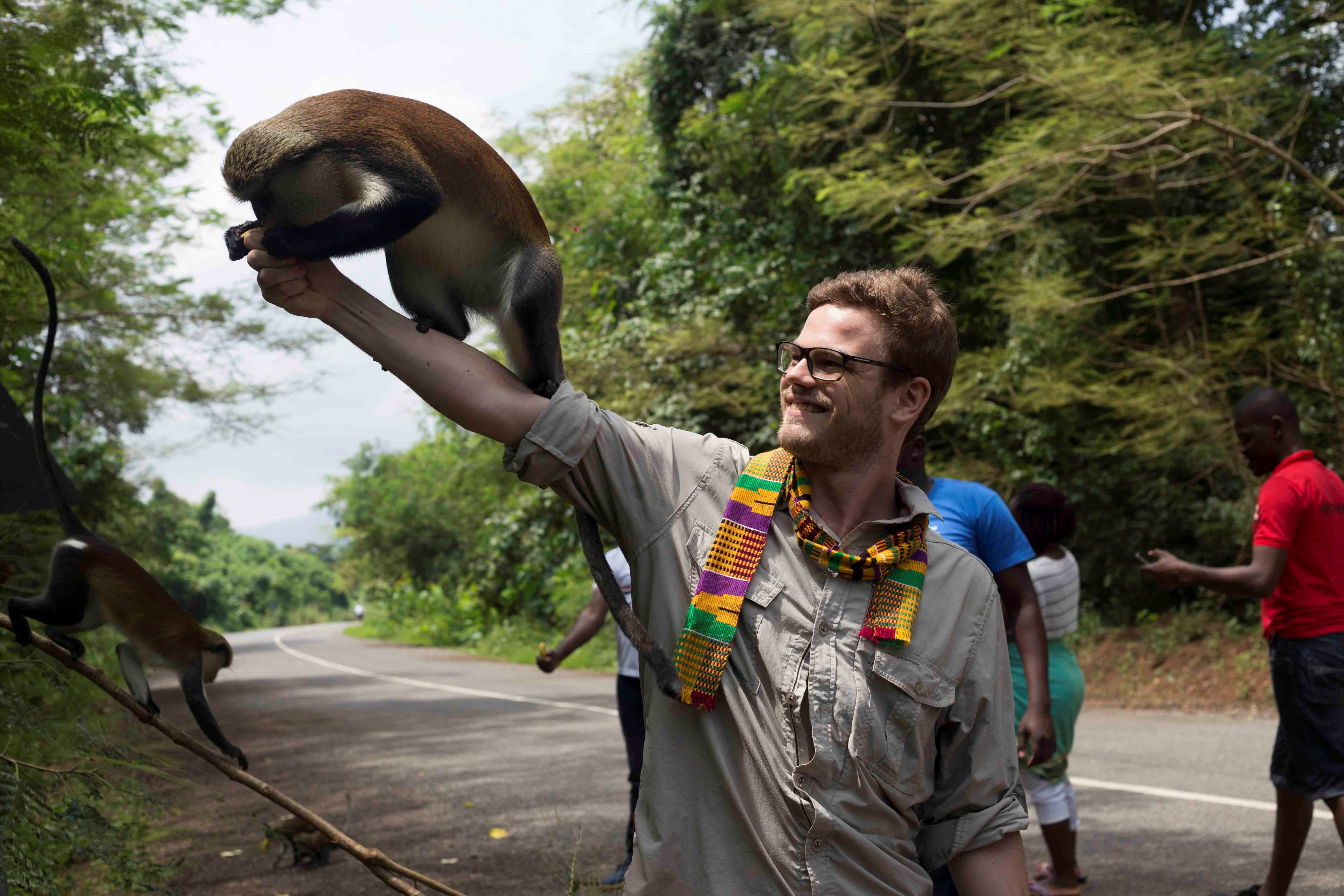 Our German team member, Max feeds one of the big monkeys in the colony
Our German team member, Max feeds one of the big monkeys in the colony
Tafi-Atome Monkey Sanctuary
The first place to visit on the last day, which is also the last place to visit in the Volta Region, on the Woezor 2016 trip was Tafi-Atome.
The team after having breakfast boarded the Metro Mass Transit coach and drove through the Amedzofe hills to the famous village that houses species of Mona monkeys
There are two monkey sanctuaries in Ghana, Boabeng-Fiema monkey sanctuary in the Nkoranza North District of the Brong-Ahafo Region and where we were visiting at Tafi-Atome. Both are home to Mona monkeys.
The story of Tafi-Atome Monkey Sanctuary is very interesting. The inhabitants of the area who are, like the people of Agotime, not Ewes but Guans migrated to the area.
Not long after that the monkeys which were in the forests where they lived somewhere in the now Central Region of Ghana followed them to their current location.
They considered the monkeys as deities. However, when Christianity spread to that part of the country some people started killing the monkeys until some ecotourism advocates intervened and educated them on the need to keep the animals for tourism purposes.
Since them the people and the monkeys which occupy their forests have lived side by side together. There is no poaching and there is no killing of the monkeys for food.
The village attracts several visitors who play with the monkeys by giving them bananas just like our team did.
The difference between the Tafi Mona monkeys and the and those of Fiema is that the Tafi ones have white lines at either side of their butts, but the Fiema ones don’t have that, according to the young tour guide who took us round, gave us history and thought us how to feed the monkeys.
It was another wonderful experience in knowing how monkeys lived with humans in one village peacefully without any acrimony.
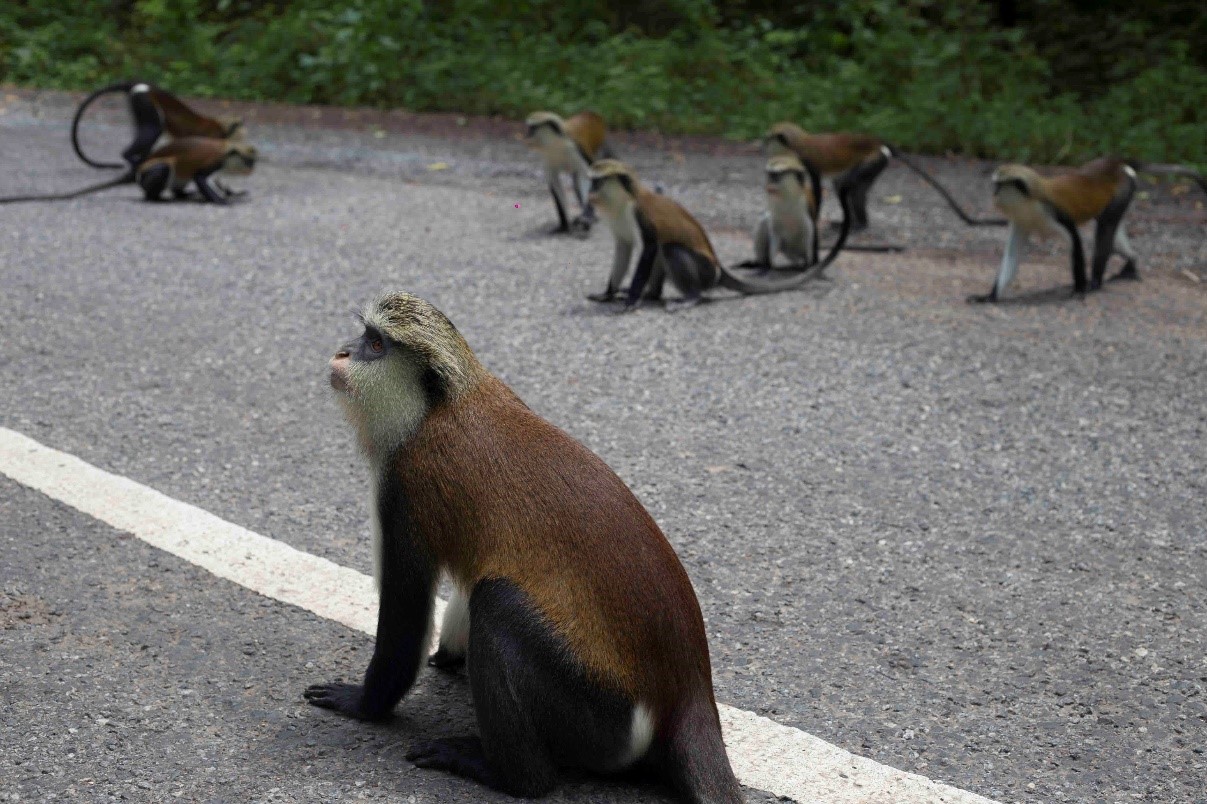 A lot of monkeys on the one street that passes through the Tafi-Atome village to Kpando
A lot of monkeys on the one street that passes through the Tafi-Atome village to Kpando
The trip Ho to Ada was made after the team had returned to Ho from Tafi-Atome to have lunch at the famous Hillview Restaurant. After bowing different variety of food including banku and okro soup, ewokple and ademe, fufu and soup, the members of the team joined the Metro Mass Transit bus for the final leg of Woezor 2016.
Ada was to visit Aqua Safari Resort to go on a cruise on the Volta Lake and to visit the estuary and that was what we did. The cruise was made on the 16-seater pontoon, with all members strapped in live jackets, from the wharf at the resort to the estuary. Some members of the team posed for the camera at the estuary of the Volta River at Ada
Some members of the team posed for the camera at the estuary of the Volta River at Ada
The maiden trip across the Volta Region by Botweburg in partnership with ETV Ghana was a successful one. The organizers had expected a bigger number, however with a team of 20 people traveling from one place of interest to another it was an interesting maiden trip with sponsorship from Vodafone Cash and Metro Mass Transit Limited.
Botweburg plans to organize other trips to other places of interest in Ghana as part of the Domestic Travel and Experience Series (DTES) to be filmed and aired on ETV. DTES is Botweburg’s initiative to encourage domestic tourism in Ghana.
Photos by: Nicklass Asante



